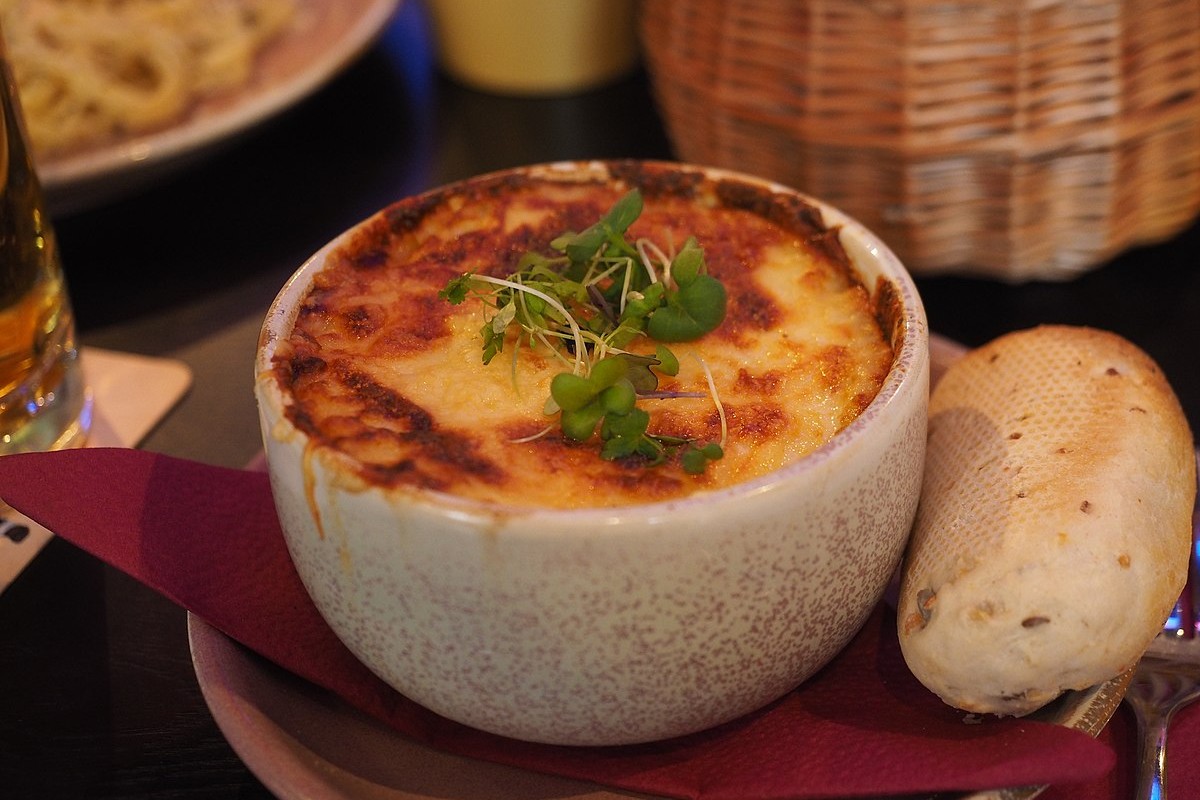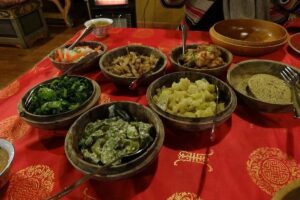Embark on a Culinary Journey Through Estonia’s Rich Heritage
Tere tulemast (Welcome), fellow food enthusiasts! Join me on a culinary adventure through the captivating world of Estonian cuisine. If you crave unique flavors, hearty dishes, and a taste of history, then the traditional food of Estonia is sure to satisfy your palate.
Estonian cuisine, shaped by the country’s unique geography, climate, and cultural influences, offers a diverse array of dishes that tell stories of resilience, resourcefulness, and a deep connection to the land. From hearty porridges and savory stews to preserved meats and fresh seafood, traditional Estonian food provides a glimpse into the culinary soul of this Baltic nation.
In this comprehensive guide, we’ll uncover some of the most popular dishes of Estonia, each representing a cherished part of the country’s culinary traditions. We’ll delve into their key ingredients, explore their cultural significance, and even point you to some of the best restaurants where you can savor these authentic flavors. So, get ready to embark on a gastronomic journey through the heart of Estonia’s culinary landscape!
1. Mulgipuder (Barley and Potato Porridge): A Hearty Staple
Description:
Mulgipuder, a simple yet satisfying dish, is a staple of Estonian cuisine and a testament to the country’s resourcefulness in utilizing local ingredients. This hearty porridge is made with barley, potatoes, and sometimes other grains like rye or oats. It’s often served with a dollop of butter, a drizzle of melted pork fat, or a side of tangy sauerkraut. Mulgipuder is a comforting and nutritious dish that warms you up from the inside out, making it a perfect choice for a cold winter day.
Recipe:
https://timetocookonline.com/2022/05/22/mulgipuder/
Key Ingredients:
Barley groats, potatoes, butter or pork fat, salt.
Restaurant Recommendation:
Kohvik Moon in Tallinn is a cozy café known for its traditional Estonian dishes, including a delicious Mulgipuder. With its warm atmosphere and friendly service, it’s a great place to experience the authentic flavors of Estonian cuisine.
2. Verivorst (Blood Sausage): A Savory Tradition
Description:
Verivorst, or blood sausage, is a traditional Estonian dish with roots dating back centuries. This savory sausage is made with a mixture of pork blood, barley, onions, and spices, encased in a natural casing. It’s typically cooked by frying or boiling and served with a side of lingonberry jam, which provides a sweet and tangy contrast to the rich, earthy flavors of the sausage. Verivorst is a true testament to Estonian resourcefulness and the use of every part of the animal.
Recipe:
https://worldcuisines.co/europe/estonia/estonian-food-verivorst/
Key Ingredients:
Pork blood, barley, onions, allspice, marjoram, salt.
Restaurant Recommendation:
Rataskaevu16 in Tallinn is a popular restaurant that serves a variety of traditional Estonian dishes, including a delicious Verivorst. Their version is made with high-quality ingredients and cooked to perfection, offering a true taste of Estonian heritage.
3. Kiluvõileib (Sprat Sandwich): A Baltic Delicacy
Description:
Kiluvõileib, a simple yet iconic Estonian sandwich, is a true testament to the country’s love for the sea. This open-faced sandwich features dark rye bread topped with butter, slices of hard-boiled egg, pickled sprats, and fresh dill. The combination of flavors and textures is a symphony in your mouth, with the salty fish, creamy egg, and tangy pickles creating a harmonious balance. Kiluvõileib is a popular appetizer or snack and is often served with a cold beer or a glass of schnapps.
Recipe:
https://nami-nami.ee/retsept/7903/ehtne_eesti_kiluvoileib
Key Ingredients:
Dark rye bread, butter, hard-boiled eggs, pickled sprats, dill, red onion (optional).
Restaurant Recommendation:
Leib Resto ja Aed in Tallinn is a charming restaurant that specializes in Estonian cuisine with a modern twist. Their Kiluvõileib is a creative and delicious take on this classic sandwich, featuring house-cured sprats and freshly baked rye bread.
4. Süldikeel (Jellied Veal Tongue): A Gelatinous Delight
Description:
Süldikeel, a jellied veal tongue, might sound unusual to some, but it’s a beloved delicacy in Estonia. This dish involves simmering a veal tongue until tender, then slicing it and setting it in a flavorful gelatin made from the cooking liquid. The result is a tender, melt-in-your-mouth dish with a unique texture and a savory taste. It’s often served cold as an appetizer or part of a larger meal, accompanied by horseradish or mustard for an extra kick.
Recipe:
https://youtu.be/xnRl_JPOWDM?feature=shared
Key Ingredients:
Veal tongue, carrots, onions, bay leaves, peppercorns, vinegar, salt, gelatin.
Restaurant Recommendation:
Olde Hansa in Tallinn is a medieval-themed restaurant that offers a glimpse into Estonia’s culinary past. Their Süldikeel is prepared according to traditional recipes and is a must-try for adventurous eaters.
5. Marineeritud angerjas (Marinated Eel): A Taste of the Sea
Description:
Marineeritud angerjas, or marinated eel, is a popular Estonian dish that showcases the country’s love for seafood. Fresh eel is marinated in a mixture of vinegar, spices, and sometimes onions, giving it a tangy and flavorful profile. The marinated eel is then typically served cold as an appetizer or part of a smörgåsbord, a traditional Scandinavian buffet. Its delicate texture and unique flavor make it a favorite among seafood lovers.
Recipe:
https://culinarycreationss.com/posts/baltic-delicacy-estonian-marineeritud-angerjas-marinated-eel
Key Ingredients:
Eel, vinegar, onions, sugar, salt, peppercorns, bay leaves, allspice.
Restaurant Recommendation:
Umami in Tallinn is a modern restaurant that focuses on fresh, seasonal ingredients. Their Marineeritud angerjas is a creative and contemporary take on this classic Estonian dish, showcasing the versatility of eel in the culinary world.
6. Hapukapsas (Sauerkraut): A Tangy Staple
Description:
Hapukapsas, or sauerkraut, is a fermented cabbage dish that holds a special place in Estonian cuisine. This tangy and slightly sour side dish is made by finely shredding cabbage and fermenting it with salt. The result is a probiotic-rich food that’s not only delicious but also beneficial for gut health. Hapukapsas is often served as a side dish to meat dishes, adding a refreshing and tangy counterpoint to richer flavors.
Recipe:
https://nami-nami.ee/retsept/7291/olles_hautatud_hapukapsas
Key Ingredients:
Cabbage, salt, caraway seeds (optional), juniper berries (optional).
Restaurant Recommendation:
Vanaema Juures in Tallinn is a cozy restaurant that serves traditional Estonian home-style cooking. Their Hapukapsas is made according to a time-honored recipe and is a perfect accompaniment to their hearty meat dishes.
7. Sült (Head Cheese): A Savory Treat
Description:
Sült, also known as head cheese, is a traditional Estonian dish made from various parts of a pig’s head, including the ears, snout, and tongue. These parts are simmered until tender, then chopped or ground and mixed with gelatinous broth. The mixture is then poured into a mold and allowed to cool and solidify. The result is a flavorful and gelatinous terrine that’s often served cold as an appetizer or snack.
Recipe:
https://nami-nami.ee/retsept/9580/kodune_lihasult
Key Ingredients:
Pig’s head (ears, snout, tongue), onions, garlic, bay leaves, peppercorns, salt, gelatin.
Restaurant Recommendation:
Pegasus in Tallinn is a well-regarded restaurant that offers a sophisticated take on traditional Estonian cuisine. Their Sült is beautifully presented and boasts a delicate balance of flavors.
8. Põdrakarbonaad (Elk Cutlet): A Taste of the Wild
Description:
Põdrakarbonaad, or elk cutlet, is a traditional Estonian dish that celebrates the country’s connection to nature and its abundance of wild game. This lean and flavorful meat is typically marinated in a mixture of juniper berries, garlic, and herbs, then pan-fried or grilled to perfection. The result is a tender and juicy cutlet with a slightly gamey flavor that’s both unique and satisfying.
Recipe:
https://andrewzimmern.com/recipes/grilled-elk-chops-with-apples-onions-and-rutabaga-mash/
Key Ingredients:
Elk cutlet, juniper berries, garlic, thyme, rosemary, salt, pepper, oil or butter.
Restaurant Recommendation:
Ö Restaurant in Tallinn is a fine dining establishment that offers a creative and modern take on Estonian cuisine. Their Põdrakarbonaad is a culinary masterpiece, featuring perfectly cooked elk and a sophisticated presentation.
9. Karulaugu supp (Ramsons Soup): A Springtime Delicacy
Description:
Karulaugu supp, or ramsons soup, is a seasonal Estonian dish that celebrates the arrival of spring. Ramsons, also known as wild garlic, are a type of wild onion with a pungent aroma and a delicate garlic flavor. This creamy soup is made with a base of potatoes, leeks, and cream, and flavored with a generous amount of chopped ramsons. It’s a light and refreshing dish that’s perfect for a springtime lunch or dinner.
Recipe:
https://mariliisilover.com/2018/04/karulaugu-ja-valge-oa-supp/
Key Ingredients:
Ramsons (wild garlic), potatoes, leeks, cream, butter, vegetable broth, salt, pepper.
Restaurant Recommendation:
F-Hoone in Tallinn is a trendy restaurant that offers a seasonal menu showcasing the best of Estonian ingredients. Their Karulaugu supp is a must-try during the spring months, when ramsons are at their peak.
10. Silgusoust (Baltic Herring with Sour Cream): A Coastal Classic
Description:
Silgusoust, a simple yet flavorful dish, is a testament to Estonia’s love for Baltic herring, a staple fish found in the surrounding waters. This traditional dish features salted herring fillets soaked in water to remove excess salt, then mixed with sour cream, onions, dill, and often potatoes. The result is a creamy and tangy dish with a subtle salty flavor that’s both refreshing and satisfying.
Recipe:
https://www.travel365.it/tallinn-estonia-cosa-mangiare.htm
Key Ingredients:
Baltic herring fillets, sour cream, onions, dill, potatoes, salt, pepper.
Restaurant Recommendation:
Kaerajaan in Tallinn is a cozy restaurant known for its traditional Estonian cuisine, including a delectable Silgusoust. Their version is made with fresh, locally sourced ingredients and is sure to satisfy any herring lover.
Farewell to Estonia’s Culinary Delights
As we conclude our culinary journey through Estonia, I hope you’ve gained a deeper appreciation for the country’s rich and diverse food culture. From hearty porridges and stews to unique dishes like jellied veal tongue and marinated eel, traditional Estonian food offers a wide range of flavors and textures that are sure to delight your senses.
Whether you’re planning a trip to Estonia or simply want to recreate these authentic flavors at home, I encourage you to explore the world of Estonian cuisine. From bustling markets to charming restaurants, there’s always something new to discover and savor in this fascinating country. So, raise a glass of Vana Tallinn liqueur and toast to the culinary treasures of Estonia – a land where food is not just sustenance, but a celebration of history, culture, and tradition. Head isu! (Bon appétit!)




